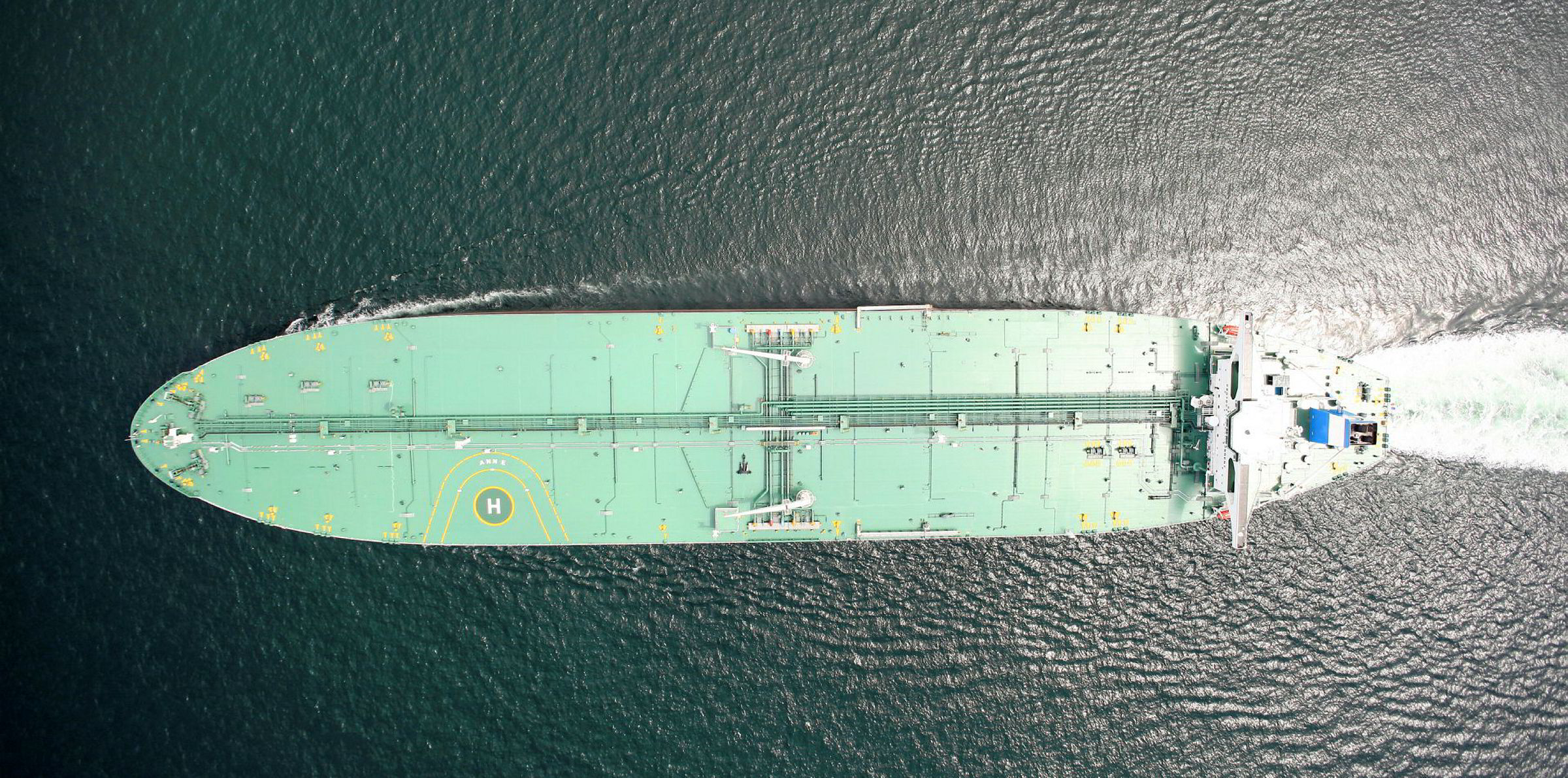Spot VLCC earnings have nearly halved this week amid low activity in the Middle East Gulf (MEG) and elsewhere.
On the Baltic Exchange, time charter equivalent rates for the benchmark MEG-China trade were assessed at $21,080 per day as of Wednesday afternoon, down from $40,117 per day on Monday.
“The dam has burst, and VLCC rates have taken an – overdue – nosedive,” said shipbroker Fearnleys, adding that the July market has a weak start with the June cargo count in the MEG at an 18-year low.
Data from Tankers International showed the scrubber-fitted, 299,000-dwt DHT Falcon was fixed by S-Oil on subjects for a voyage from the MEG to South Korea at Worldscale 34, with a loading date between 6 and 8 July.
Similar deals were fixed at WS 59 a week ago.
With the Opec and its Russia-led allies maintaining a historic production cut next month, crude exports from the MEG, West Africa and the Baltic Sea are expected to remain low.
On the vessel supply side, the significant congestion seen in Chinese ports after crude imports jumped 19% in May to 11.3m barrels per day (bpd) is slowly starting to recede.
The weakening supply-demand fundamentals have hit all tanker segments. Average suezmax earnings have decreased by 23.7% to $4,943 per day this week, while aframax have fallen by 16.7% to $2,732 per day.
“After the VLCC's [market] tanked at the beginning of the week, suezmaxes were suddenly not the cheapest alternative anymore, and split VLCC cargoes on [subjects] failed,” Fearnleys said.
“Going forward this will mean more VLCC cargoes and less for suezmaxes.”
Fearnley Securities, the broker’s affiliated investment bank, still counts nearly 90 VLCCs on storage contracts when vessels owned by National Iranian Tanker Co are excluded.
"With the oil market turning into backwardation and firm physical prices, some of these floating trades are expected to be unwound in the coming months, creating further pressure on the balance," Fearnley Securities said.
By late July, it is still expecting spot VLCC earnings to be in the $20,000s per day.
Hope in Libya?
But some good news may be on the way for tankers owners from Libya.
The UN-backed Government of National Accord (GNA) has gained ground in its civil war against the rebel Libyan National Army (LNA), which had blocked exports from eastern ports.
It has recaptured the capital, Tripoli, and may push eastwards to liberate more terminals.
Two major oil fields connected to the Zawia terminal, Sharara and El Feel, restarted production briefly at the start of June but were then closed again by another militia.
"A small pickup in oil exports out of the west could signal improvements to come, albeit it remains unclear if and when Sharara and El Feel, the country's major onshore fields in the west, might return to full operation," analysts at Kpler said.
Slight 'bump' from Zawia
"The latest GNA success in the west has seemingly enabled a slight bump in the volume of crude departing the Zawia terminal."
In May, departures out of Zawia averaged 39,000 bpd, the first sign of any positive volumes since February.
This trend of loadings has maintained into June, likely as a result of draws from storage.
At full production, Zawia should manage to export volumes in a range between 150,000 bpd and 250,000 bpd, Kpler said.
Major uncertainty remains
In total, exports out of the west, excluding the FPSOs Bouri and Farwah, averaged 272,000 bpd in 2019.
"It is possible that recent GNA victories could allow, in the least, a portion of this production to come back to the market," Kpler said.
"However, the level of certainty remains pretty low given the Sharara and El Feel fields were shut only days after reopening."
Total Libyan departures remain "muted", Kpler said, holding at just 143,000 bpd so far this month, against 1.1m bpd in the fourth quarter of 2019.







